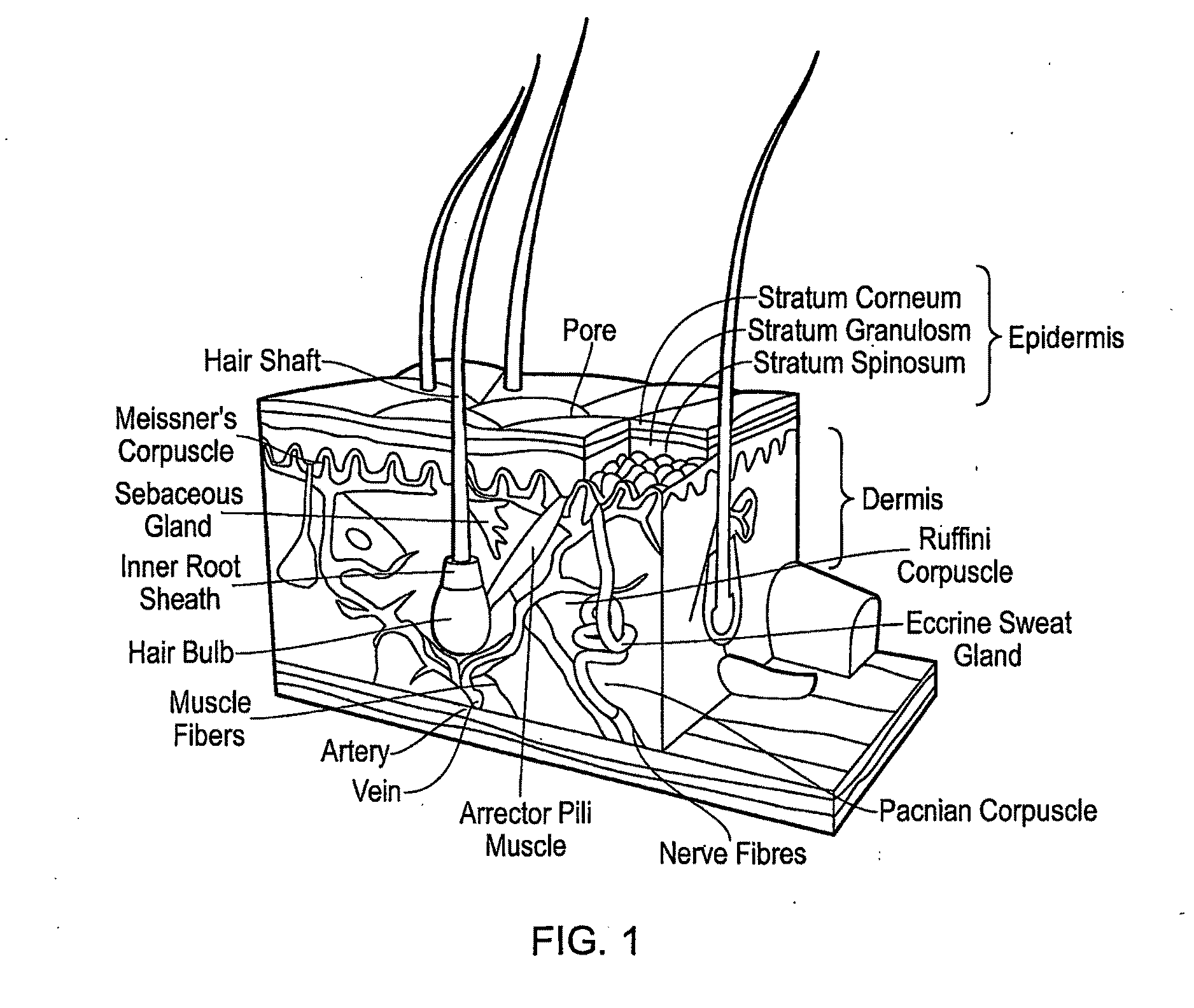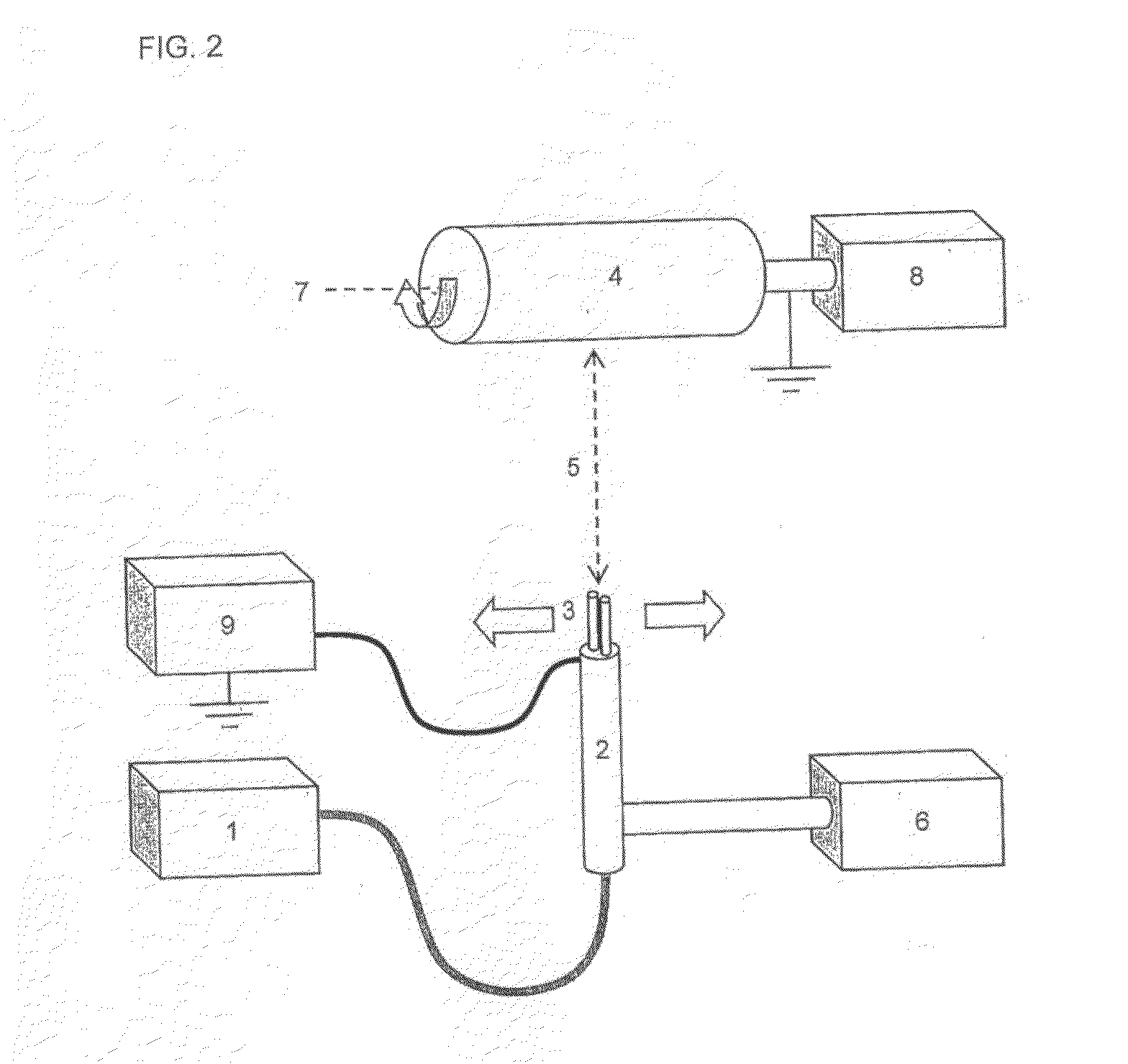Multilayer Scaffold
a multi-layer, scaffold technology, applied in the direction of prosthesis, bandages, drug compositions, etc., can solve the problems of increased morbidity and mortality of other body sites, inability to treat large lesions in this manner, and complications of elderly patients or those with complicating medical conditions (e.g. heavy smokers, diabetics) to avoid potential ethical and religious barriers to use, and avoid possible risks
- Summary
- Abstract
- Description
- Claims
- Application Information
AI Technical Summary
Benefits of technology
Problems solved by technology
Method used
Image
Examples
example 1
[0106]A non-woven monolayer scaffold was prepared by electrospinning a solution of poly(glycolic acid) (PGA) in 1,1,1,3,3,3-hexafluoropropan-2-ol (hexafluoroisopropanol, HFIP).
Solution Preparation.
[0107]PGA supplied by PURAC Biomaterials (with an approximate weight-average molecular weight of 130,000) was melt-extruded at 260-274° C. using a Rondol Linear 18 single screw extruder and then immediately quenched in water at 5-10° C. This extruded PGA was used to prepare a 7 w / w % solution in spectrophotometric grade HFIP supplied by Apollo Scientific Ltd (corresponding to a solution viscosity of approximately 0.35 Pa·s). This solution was left rolling overnight at 21° C. until dissolved. Prior to electrospinning, the solution of PGA in HFIP was filtered through a 10.0 μm Whatman Polydisc HD filter (polypropylene filter, 50 mm diameter) directly into a 20 mL syringe (polypropylene, lubricant-free, 20.0 mm internal diameter). The resulting polymer solution was free from visible particula...
example 2
[0118]An 8 w / w % solution of PGA in HFIP was prepared and used to prepare a non-woven monolayer scaffold material using the same general method described in Example 1. This concentration of PGA in HFIP corresponds to a solution viscosity of approximately 0.55 Pa·s. FIG. 4 shows an SEM image of the scaffold acquired at a magnification of 10,000.
Results
[0119]Thickness=120-140 μm across the central 65% of the scaffold length.
Mean fibre diameter=0.51 μm±0.12 μm.
Largest Detected Pore Diameter=2.29 μm
[0120]Mean-Flow Pore Diameter (median pore diameter)=1.15 μm
Diameter at Maximum Pore Size Distribution=0.94 μm.
example 3
[0121]A 9 w / w % solution of PGA in HFIP was prepared and used to prepare a non-woven monolayer scaffold material using the same general method described in Example 1, although no aqueous sodium chloride was added to the solution of PGA in HFIP. This concentration of PGA in HFIP corresponds to a solution viscosity of approximately 0.85 Pa·s. In addition, the electrospinning duration was increased to 68 minutes. FIG. 5 shows an SEM image of the scaffold acquired at a magnification of 6,000.
Results
[0122]Thickness=100-110 μm across the central 70% of the scaffold length.
Mean fibre diameter=0.81 μm±0.38 μm.
Largest Detected Pore Diameter=3.44 μm
[0123]Mean-Flow Pore Diameter (median pore diameter)=1.87 μm
Diameter at Maximum Pore Size Distribution=1.58 μm.
PUM
| Property | Measurement | Unit |
|---|---|---|
| diameter | aaaaa | aaaaa |
| diameter | aaaaa | aaaaa |
| diameter | aaaaa | aaaaa |
Abstract
Description
Claims
Application Information
 Login to View More
Login to View More - R&D
- Intellectual Property
- Life Sciences
- Materials
- Tech Scout
- Unparalleled Data Quality
- Higher Quality Content
- 60% Fewer Hallucinations
Browse by: Latest US Patents, China's latest patents, Technical Efficacy Thesaurus, Application Domain, Technology Topic, Popular Technical Reports.
© 2025 PatSnap. All rights reserved.Legal|Privacy policy|Modern Slavery Act Transparency Statement|Sitemap|About US| Contact US: help@patsnap.com



